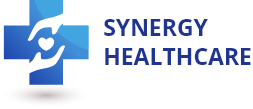The healthcare industry is constantly evolving. With the constant change that is occurring, it is only possible for hospitals to remain at the top when they can deliver on the promise of taking care of their patients and providing them with the best healthcare services. However, if in-house staff tries to manage the financial side of things it can become costly and time-consuming. Hiring experts in the field of revenue cycle management is the key to effective revenue management in the medical industry.
Understanding revenue cycle management, and how it helps hospitals in generating revenue is key to an effective RCM. The financial process of where medical billing software is utilized in order to keep a track of all the details of the patients right from the process of registration until the completion of payment is known as RCM.
It is through the proper usage of revenue cycle management that helps in the unification of the clinical and business side of hospitals, through the process of joining the data from administration, personal information of the patient with the name of the insurance company. It also keeps track of all the specialized treatment given to the patient and all of the relevant healthcare information.

Communication with the insurance providers plays a crucial role in the revenue cycle management process. When a patient gets their appointment scheduled, the staff always make sure to check the insurance coverage of the patient. After the treatment is received by the patient a coder or a healthcare provider segregates the type of treatment following ICD-10. The medical institution then sends the acquired data along with the description provided under ICD to the insurance company.
Steps Involved in Revenue Cycle
According to HFMA (Healthcare Financial Management Association), the process of revenue cycle management has all of the clinical and administrative functions which helps in the contribution to the management, capturing, and collection of all the required revenue data of the patient services.
The steps that fall under the revenue cycle are:
- Submitting proper claims: Submission of claims of all the bills to the insurance providers.
- Proper coding: Coding procedures and diagnoses.
- Charging for the required services: Making sure to bill all of the medical services.
- Collections: Calculating all of the pending payments and collecting them.
- Pre-registration: Noting down all of the required pre-registration details, including the coverage of the insurance before the outpatient or the inpatient procedures begin.
- Process of registration: With the required information noted from the process of pre-registration, a medical record is established.
- Process of remittance: Rejecting or applying for payments through the process of remittance.
- Follow-up of third-party: Collection of payments from all of the third-party insurance companies.
What Are the Challenges Of Revenue Collection In Health Care Services?
In the healthcare industry, the administrative procedures are quite different when compared to the other industries. It has many layers and steps which need to be completed. If they are not followed properly it will lead to the rejection of claims. However, there are a number of revenue cycle management challenges faced by healthcare institutes.

1. Billing and coding -
The process of billing and coding is crucial for any medical practice. When done in a correct and proper manner, it results in the correct revenue cycle. However, it must be done accurately since it has a direct correlation with the income of the hospital. In order to get the correct amount, a medical institution must hire an RCM company that has adept medical coders and billers.
2. Adhering to standards -
A patient’s personal details contain sensitive information that must be protected. Healthcare revenue cycle management service must work in accordance with HIPAA (Healthcare Information Portability and Accountability Act, 1996). Healthcare abuse and fraud can lead to penalties causing severe effects on any healthcare institution. The following mandates that fall under HIPAA are;
- Complying regularly to the audits.
- Standardizing the medical codes.
- Medical claims must have electronic filing.
- Workstations that are fool-proof.
3. Inter-operability
Communication and Information Technology helps in saving a chunk of healthcare costs and time through the acceleration of information exchange in various medical landscapes. Clinicians, doctors and physicians can therefore have access to all of the patient information. However, when it comes to interoperability, its perks mostly remain untapped. Through the proper ICT tools, strategies, and healthcare phraseology, the technological challenges faced in the department of healthcare technology can therefore be avoided.
4. The Increasing gap between the clinical and business side
There are a number of non-medical components that fall under the RCM process. Billing and coding, verification process, collecting of payments, follow up of claims and many more are some examples. Therefore, every medical institution must spend a large amount of its money in order to train the non-clinical staff. However, it will only be a waste of time and money for the hospital. This can only be solved through outsourcing medical billing services.
5. Consistent flow of cash
The American Medical Association says that 1 out of 10 claims are not always paid in an accurate manner. A proper cash flow for any medical organization is important. If it is not the case, then an organization needs to take all the necessary steps that can boost the flow of revenue. It is important to identify the key elements of a revenue cycle that can help in boosting the revenue.
6. Data analytics
Data analytics help in the optimization of cash flow, health information, and the clinician’s time. But the problem arises when the healthcare institutions are unable to capture the untapped potential under data analytics. When it comes to revenue cycle management for small practices, the proper data analytics can help out a lot. It brings about visibility with the right solutions, it also helps in enhancing clinical decisions. It also helps in improving the care provided to the patients.
Any healthcare institute can save up on their costs when they seek medical billing services. It helps in improving the overall productivity besides boosting the utility of the employees. Medical billing companies like Synergy HCLS are providing great support to the healthcare industry, by bringing in more revenue and business.






